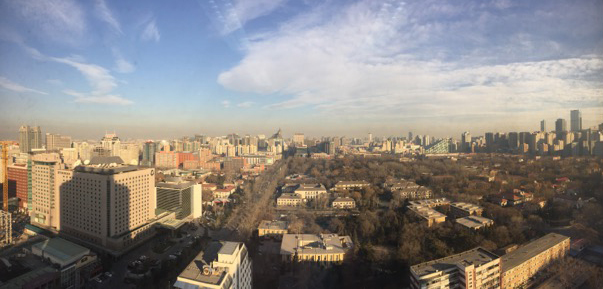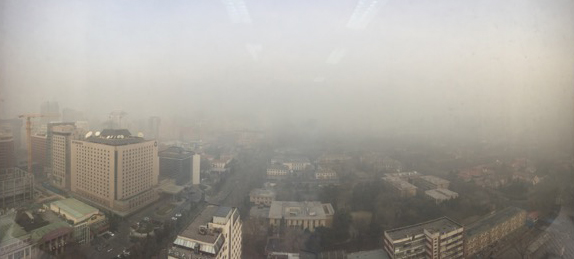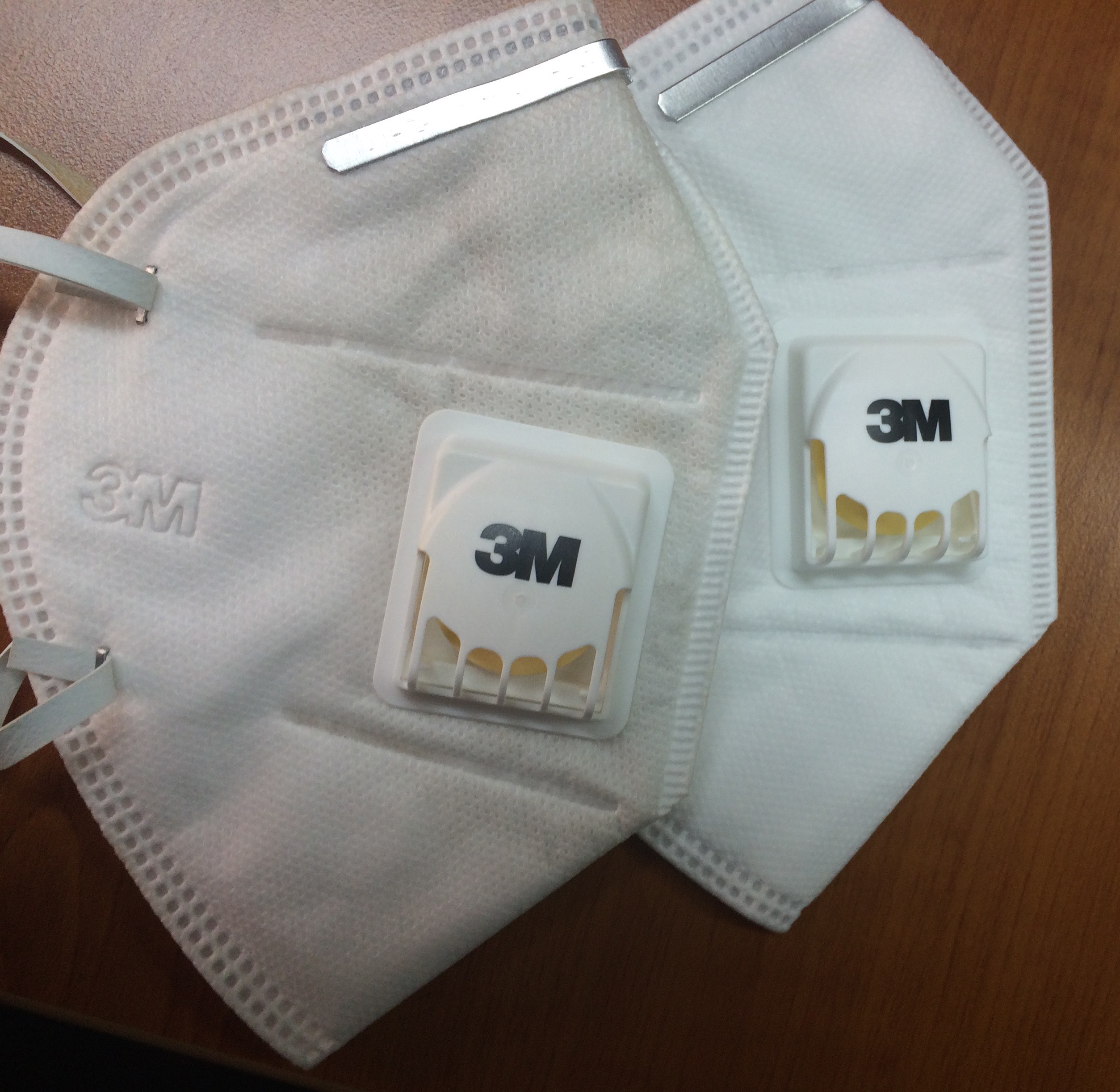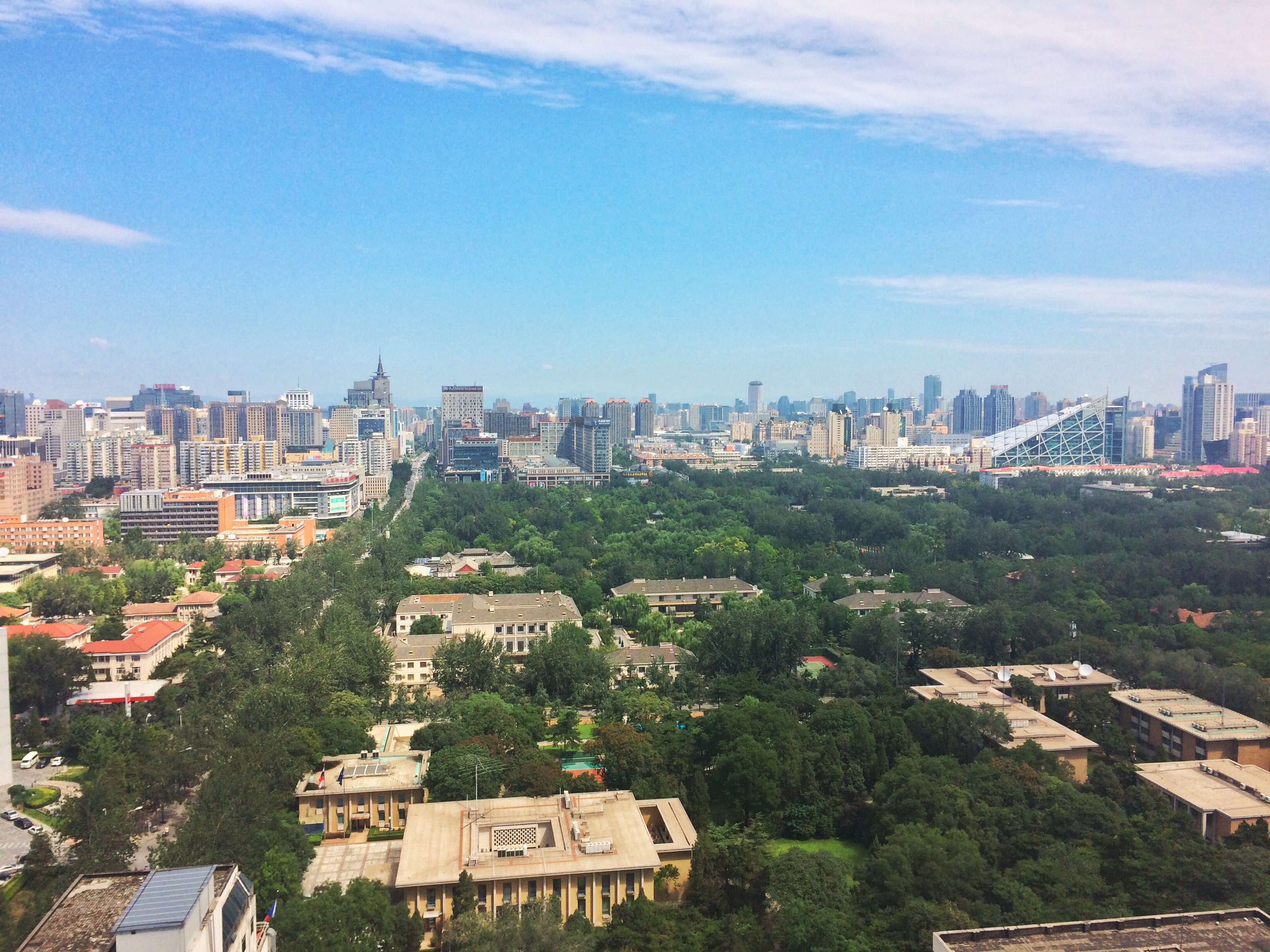Costs and benefits of motor vehicle emission control programs in China
Blog
Beyond hazardous
In Beijing, air pollution is once again off the charts. The first red alert of the winter was issued in December while I was there, and the heavy smog (mixed with apparently hazardous fog) is now back in January.
The US Embassy helped to put a focus on Beijing’s air pollution several years ago when it began to broadcast pollution levels measured by an air quality monitor installed on the embassy rooftop. Now there are monitoring stations all over the city, and they provide a more detailed picture of how bad things are getting. The embassy’s air-quality index (AQI) terms fine-particle (2.5 microns or smaller) concentrations of 300 to 500 µg/m3 “hazardous.” Throughout Beijing now, air quality has passed into the perilous territory beyond hazardous, with levels in December often well above 500 and now even occasional reports of levels above 700—what the embassy now labels “beyond index,” but which in the early days of monitoring it called, more vividly, “crazy bad.”
Beijing’s winter air is cold, and the cold air is heavy, resting on the city like a lid on a pot. The kind of air pollution trapped there, for which Beijing winters are famous, is the worst possible kind. It is made up of tiny particles, so small that they are able to sneak past all the body’s defenses (think nose hair, mucous, saliva) and get all the way deep into the human lungs and even reach our hearts and brains. The video embedded below gives a great overview of the impact.
While these particles are deadly, they are stealthy too, killing by increasing the risk of death of already relatively common diseases, such as heart disease, stroke, lung cancer. Only in the very worst air-pollution episodes, like the infamous Great Smog of 1952 in London, can we actually identify air pollution as the direct cause of death.
In December I took precautions to avoid exposure, wearing a mask and mostly staying indoors. Stuck in my hotel room (I had to wear a mask even in the lobby), I tried to look on the bright side (without access to Google News, Facebook or the New York Times, it was a Trump holiday!), but calibrating air quality by the ghostly mirages of nearby buildings was indeed depressing. At first I made light that this was not the worst Beijing pollution I had seen: a decade ago I was there during such a crazy bad air pollution episode that I could not make out anything of the iconic CCTV building that was being constructed directly across the street from where I was standing. But then I remembered that my flight out had been canceled because you literally couldn’t see through the air. (The harrowing bus ride to the hotel provided by the airline, with less than a car-length of visibility ahead, was not cancelled.) When hundreds of flights were cancelled on the day I was scheduled to fly out for this trip, I briefly considered taking the six-hour train trip to Shanghai and flying from there.


Both photos were taken from Beijing during the December visit mentioned above. The photo on the left is from the morning of Friday, December 12th, the red alert took effect that evening. The photo on the right was taken on the morning of Tuesday, December 20th, from the same angle.
A decade ago, there was no monitoring, no forecasts, no precautions, and no restrictions as a result of the soupy air. Now monitors throughout the city track and tweet the danger. The red and orange alerts issued for Beijing trigger restrictions on private car use (perhaps not always helpful), closure of factories and construction sites, and warnings for sensitive populations to stay indoors and take protective measures, such as wearing a pollution mask. The disposable 3M mask that I wore has been rated well, and after four or five hours of use I can clearly see the particles blocked have turned the outside a dingy grey, while the inside is still quite white. Unfortunately many people wear masks that are not actually protective, and most wear nothing at all.


A new mask shown in comparison to one worn (for 4-5 hours) during the December days of heavy pollution.
While it may not be readily apparent, Beijing’s Environmental Protection Bureau and the federal government in China have been working diligently over the last decade to tackle the transportation sector sources of tiny particles (diesel trucks, buses and construction equipment), and the other pollutants from both cars and trucks that can form particles in the atmosphere. Much cleaner 10-ppm sulfur fuel is required nationwide from January 1, which will directly reduce pollutant emissions (less sulfur content = fewer particles emitted) and also enable use of more effective vehicle-emission control technologies. Taking advantage of the availability of clean fuel, this year China will publish standards that require the best practices for control of emissions from both passenger vehicles and heavy-duty vehicles. For diesel vehicles these standards will reduce the number of fine particles emitted by 99% and reduce emissions of precursors to secondary particle formation by more than 90%. (Roughly half of the air pollution is due to formation of particles in the atmosphere, which is accelerated in contaminated conditions.) Precursor emissions from cars, which have already been cleaned up substantially, will be reduced 70%–80%. China’s new Clean Air Law gives more authority to the Ministry of Environmental Protection to enforce these regulations and also to adopt much stronger regulations for off-road vehicles (construction equipment and agricultural vehicles) and marine vessels.
(While I know less about other sectors, The Economist predicts that China will be timid in efforts to clean up industry as a way to protect jobs, although as history shows environmental protection is good for economic growth.)


Both photos above were taken by Hui He, our China regional lead, during 2016 visits to our Beijing office. The photo on the left is from this past August, while the photo on the right was taken mid-October from the same angle during a “blue” alert day, the lowest level of China’s four-tier warning system for severe weather.
My flight left Beijing without incident this time, and when I landed back in San Francisco I breathed in deeply and resolved never for a moment to take crystal clear air for granted. While Beijing is on the right track for the transportation sector, and is in fact now a good example of the path that Mexico and other regions must follow to avoid even worse air pollution events, the air-quality challenge is so great that they cannot afford to let up. In Beijing, as in Mexico City and many polluted megacities in the world, the air-quality challenge is exacerbated by geographical and meteorological conditions—a ring of mountains and low winds trap air pollution in the city. But the human-made pollution is anything but a natural disaster, and the transportation sector, like all sectors, must do everything possible to reduce emissions.
